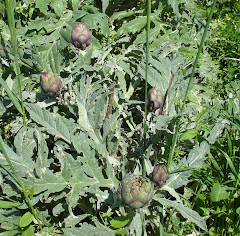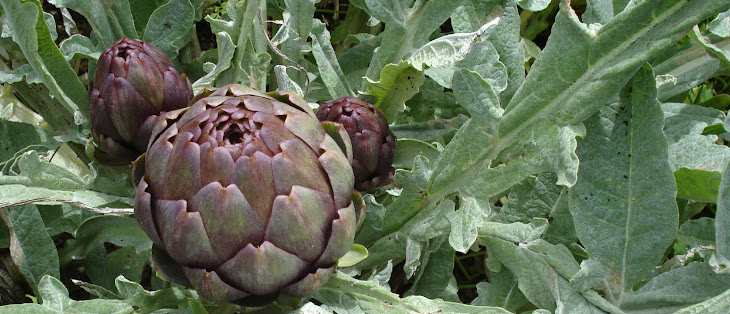Some days have been warm and bright, almost like spring, with the sun casting sharp shadows ….
and some days have been cold and grey …
… as it was yesterday when we went the Domaine d’Estève at Roquessels to buy wine – this was the view from there, looking back towards Gabian, which is behind one of the hills in the middle distance.
In the garden we’ve cleared the ground where the pepper plants were last summer, ready to spread goat manure, and spread manure on another bed which we’ll use for tomatoes this year. After working in the garden yesterday we were glad to come home to a hot meal of alubias beans given to us by our friend Drew in Navarra – they’re black when they’re dried, but turn reddish brown when cooked. I soaked them overnight then cooked them for about an hour. Then I added onion fried in olive oil, a finely chopped chorizo pepper, chopped garlic, some lardons (bacon pieces), some leftover cooked sausage and tomato purée made with our tomatoes. We ate it with some slices of fried black pudding, chopped garlic and parsley and Aveyronnais bread from the village baker.
 dried alubias – we’ll use some for seed. dried alubias – we’ll use some for seed. |  |
Olive trees
The road to Mas Rolland, where we went to fetch goat manure this week, passes a row of lovely old olive trees with beautiful twisted trunks like sculptures.
Essential batterie de cuisine #2 – espresso coffee maker
About thirty years ago my sister was living in Italy and brought us back one of these espresso coffee machines when they were still quite difficult to find outside Italy. We still use it every day – it’s showing signs of use but it works perfectly. It’s a very simple system – you fill the bottom half of the macchinetta (little machine) with water and fill the middle section with strong Italian fine-ground coffee, then heat until the water boils and is forced upwards through the coffee grounds and the coffee pours into the top section – magic!

This is our original thirty-year old coffee maker – much used and much travelled. For years, when we went on holiday, we would take it with us and if we couldn’t find a café which sold good coffee (and this can happen even in France!) we would stop somewhere and make our own on a camping gaz stove. So its battered, burnt, used-looking state is the result of years of gas flames, barbecues and campfires… but we still use it every morning to make our breakfast coffee. One of the characteristics of this way of making coffee is that the coffee makers work best when they are full, so that this one (a six-espresso cup size) is fine for our two large breakfast cups of coffee, but we’ve found we need different sizes for different occasions:
So we have two 9-cup (one made of stainless steel), a 6-cup, a 3-cup and a 1-cup size. I think this means we can make any number of perfect cups of coffee!
 hams and eggs …
hams and eggs … olives and dried fruit ….
olives and dried fruit …. hazelnuts and walnuts …
hazelnuts and walnuts … cheeses and sausage …
cheeses and sausage … more cheeses and sausages from Corsica …
more cheeses and sausages from Corsica …
 sunny balconies …
sunny balconies …







































